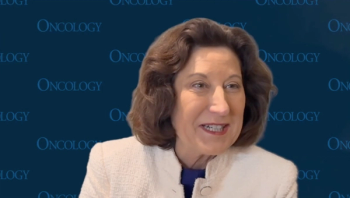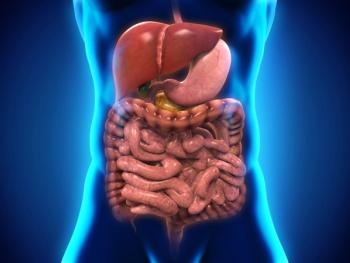
Darolutamide Yields Positive, Long-Lasting Outcomes in nmCRPC With or Without Prior Local Therapy
Three year follow-up findings from a post hoc analysis of the phase 3 ARAMIS trial indicated that darolutamide maintained a survival benefit regardless of prior local therapy for patients with nonmetastatic castration-resistant prostate cancer.
Darolutamide (Nubequa) demonstrated promising long-term overall survival (OS) and prostate-specific antigen (PSA) outcomes with or without prior local radiotherapy (RT) or radical prostatectomy (RP), according to results from a post hoc analysis of the phase 3 ARAMIS trial (NCT02200614), presented at the
Findings from a post-hoc analysis of the phase 3 ARAMIS clinical trial (NCT02200614) show that the safety and tolerability of darolutamide in patients with nmCRPC were also consistent between patients who received prior local therapy compared with those who did not.
Previously, results from the planned primary analysis of the study showed that darolutamide significantly prolonged metastasis-free survival (MFS) compared with placebo in men with nmCRPC with no added toxicity. In a population of 1509 patients, the median MFS was 40.4 months with darolutamide vs 18.4 months with placebo (HR, 0.41; 95% CI, 0.34-0.50; P < .001), resulting in a 31% reduction in the risk of metastasis or death. Findings also trended in favor of the darolutamide arm across all secondary end points, including overall survival, time to pain progression, time to cytotoxic chemotherapy, and time to a symptomatic skeletal event.2
The safety profile of darolutamide has been consistently favorable.1 In the primary analysis, treatment discontinuation occurred in 8.9% of the darolutamide group compared with 8.7% of the placebo arm. Overall, the rates of adverse events (AEs) were similar between the 2 arms, but darolutamide was associated with a higher incidence of seizures, falls, fractures, cognitive disorder, or hypertension vs placebo.2
Long-term follow-up in the ARAMIS study lasted for 3 years. Patients with nmCRPC were randomized 2:1 in the study to receive either darolutamide 600 mg twice daily or placebo while continuing androgen-deprivation therapy (ADT). The long-term analysis assessed the secondary study end points of OS, PSA outcomes, and AEs in the patients who received prior local therapy of RP or RT to the primary tumor vs those who received neither therapy.1
The 3-year survival and median time to PSA progression were estimated using Cox regression analyses, which were adjusted for age, baseline ECOG performance status, Gleason score, and time to diagnosis. The study investigators defined PSA response as a ≥ 50% decline from baseline (PSA50). AEs were summarized across the subgroups of patients who had prior RP (n = 239), RT (n = 177), either RP or RT (n = 416), neither RP nor RT (n = 538), and all patients treated with darolutamide (n = 954) in ARAMIS.
Overall, 43.6% of darolutamide-treated patients had received prior RP or RT. At baseline, the median age of patients across the subgroups ranged from 72.0 years to 76.0 years. The median PSA level in patients previously treated with RP was 6.2 ng/mL (range, 1.8-132.8), and the median PSA doubling time was 4.1 months (range, 0.7-10.4) in the RP or RT subgroup, 4.7 months (range, 1.0-11) in the neither RP or RT subgroup, and 4.4 months (range, 0.7-11.0) in all darolutamide-treated patients.
The majority of patients in the study had an ECOG performance status of 0 rather than 1 and a Gleason score ≥ 7 rather than < 7. The time from initial diagnosis to treatment in the study ranged from 74.5 months to 107.9 months.
In the darolutamide-treated population, the median OS was not reached across any subgroups or in the overall population. Among patients who received prior RP, the 3-year survival rate was 89.6%. Those treated previously with RT was a 3-year survival rate of 83.3%. Those treated with RP or RT and those who received neither had a 3-year survival rate of 86.9% and 79.0%, respectively. In all darolutamide-treated patients, the 3-year survival rate was 82.6%. In comparison, patients given placebo had a 3-year survival rate of 77.0%.
Results also showed that regardless of prior therapy, the median time to PSA progression was similar across subgroups and showed consistency with the overall ARAMIS patient population. Contrarily, the median time to PSA progression was 7.2 months in the placebo arm.
Specifically, in patients previously treated with RP (n = 239), the median time to PSA progression was 29.6 months. Those previously treated with RT (n = 177) had a 29.5-month median time to PSA progression. Among those who were previously treated with RP or RT (n = 416), the median time to PSA progression was 29.5 months, and those who received neither form of prior therapy (n = 538) had a median time to PSA progression of 26.0 months. In all darolutamide-treated patients (n = 954), the median time to PSA progression was 29.5 months.
In terms of PSA50, response rates were similar for darolutamide-treated patients regardless of their prior therapy subgroup. PSA50 responses across the prior therapy subgroups were also consistent with the overall darolutamide-treated arm in the ARAMIS trial. In the placebo arm, 33.0% achieved PSA50 response.
Patients who were treated with RP before darolutamide had an 85.8% PSA50 response rate compared with 85.3% for those treated with RT, 85.6% for those treated with RP or RT, 83.8% for those who had neither prior therapy, and 84.6% in the all darolutamide-treated patient population.
The safety profile observed with darolutamide in the longer-term analysis was consistent across all prior therapy subgroups. Overall, AEs were observed in 86.6% of the RP subgroup, 89.3% of the RT subgroup, 87.7% of the RP or RT subgroup, 84.2% of the group who receive neither RP or RT, and 85.7% of the all the darolutamide population. More than 20% of patients in each subgroup experienced grade 3 or higher AEs.
Common AEs observed during the study included fatigue, hypertension, bone fracture, falls, rash, and mental impairment. These AEs were determined to be events that are commonly observed with androgen receptor inhibitors. Local AEs that occurred in > 5% of any subgroup included fatigue, constipation, abnormally frequent urination, hematuria, and dysuria.
References
- Siemens DR, Fizazi K, Shore ND, et al. Efficacy and safety of darolutamide in nonmetastatic castration-resistant prostate cancer patients with and without prior local therapy with radical prostatectomy or radiotherapy. J Urol. 2020;207(5):e451. doi:10.1097/JU.0000000000002570.05
- Fizazi K, Shore N, Tammela TL, et al; ARAMIS Investigators. Darolutamide in nonmetastatic, castration-resistant prostate cancer. N Engl J Med. 2019;380(13):1235-1246. doi:10.1056/NEJMoa1815671
Newsletter
Stay up to date on recent advances in the multidisciplinary approach to cancer.

















































































